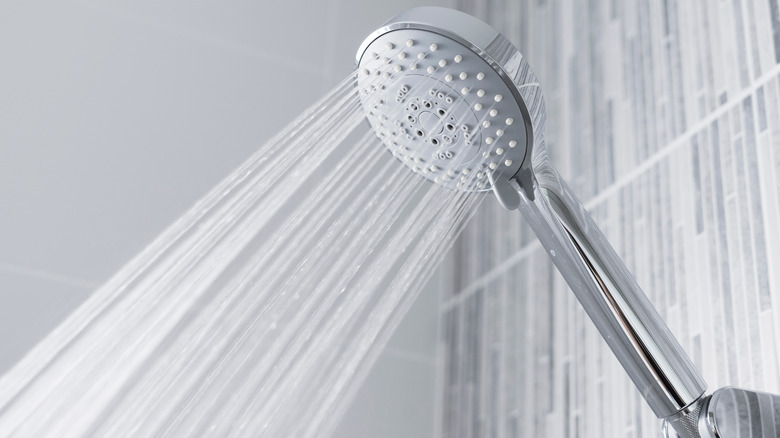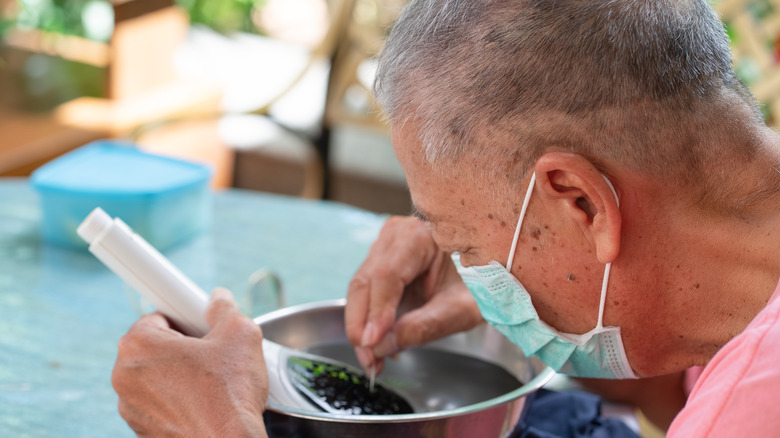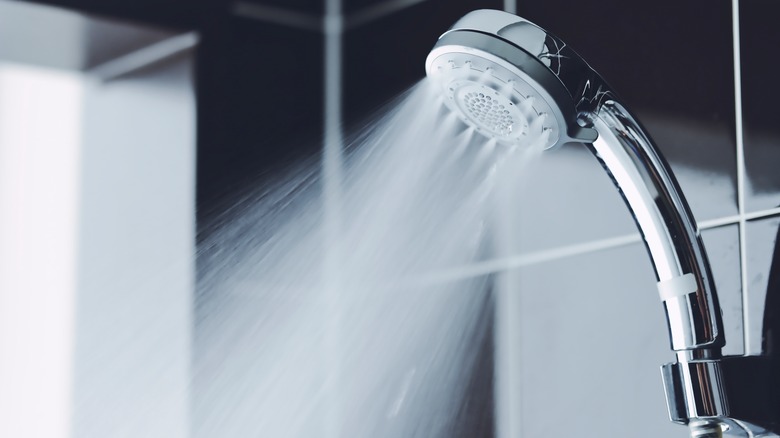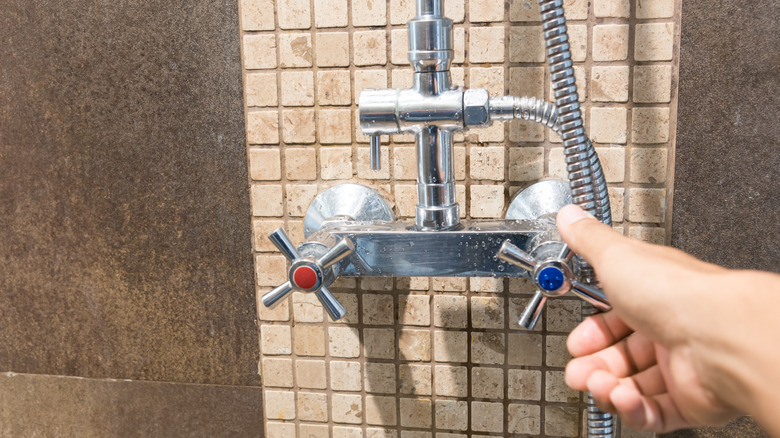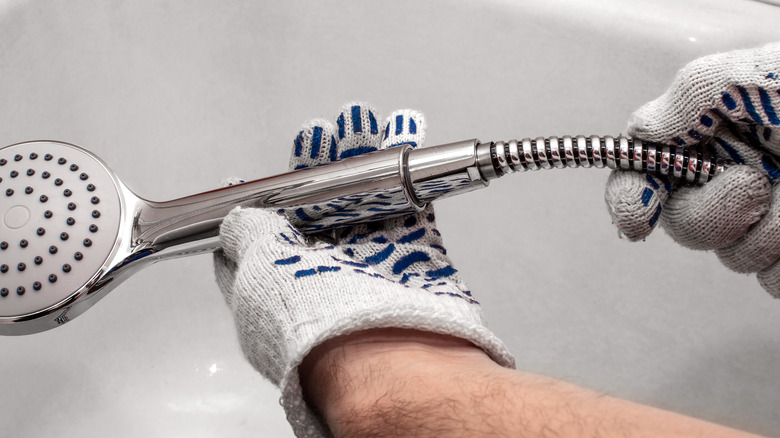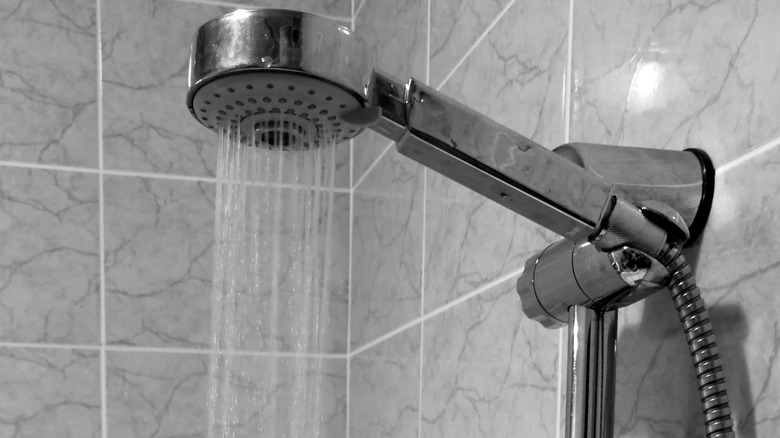5 Simple Ways To Increase Your Showers Low Water Pressure
Taking a long warm shower is one of life's little pleasures. It is the perfect time to freshen up and relax your body after a long day's work. However, if your shower releases no more than a dribble instead of a strong jet, then your showering experience won't be quite as fun. Think about how long it will take you to remove the shampoo from your hair and the unnecessary time you will spend in the shower. If you are dealing with this problem in your bathroom, fret not, there are plenty of quick fixes that will improve the pressure situation in your shower. But what is the ideal water pressure for residential use?
According to 1st Home & Commercial Services, the ideal water pressure for indoor use ranges from 40 to 60 psi. However, before thinking of implementing any solution, it is important to do some troubleshooting to determine whether the low water problem is limited to your shower only or the entire house. You can achieve this by opening several faucets around your house to check if there is a difference in water pressure. This will go a long way in helping you get the right solution to the specific problem. With that in mind — let's take a look at some of the ways you can improve your shower's water pressure.
Unclog your showerhead
It is quite common for showerheads that have been in use for years to collect and accumulate minerals and sediments. Over time, the buildup blocks the water opening reducing the flow of water from the showerhead significantly. The good news, however, is that fixing this problem is quite easy. In fact, you don't need to call a professional, you can easily DIY right from home. First, you will need to unscrew the showerhead from the arm — typically, the showerhead should be easy to unscrew, however, if it doesn't budge on the first attempt, consider using tools like an adjustable wrench for some more leverage.
Water Pik recommends soaking the showerhead in vinegar for a few hours to help remove the mineral deposit. Right after, scrub the showerhead with an old toothbrush and also use a toothpick to remove any remaining sediments from the holes. Now, reinstall the showerhead and test the water pressure for improvement.
Check if you have a flow restrictor
Although the National Energy Act requires faucet and showerhead manufacturers to install flow restrictors in showerheads, the truth is that not everyone benefits from reduced water pressure. This is particularly true for the folks living away from the city and relying on a well for water. According to The Plumbing Source, households using wells have holding tanks with regulators whose work is to keep the water pressure within a given range — think about it, with a flow regulator in your showerhead, the water pressure can be reduced to mere dribbles.
While removing the flow restrictor is not advisable for every situation, it is necessary to mention that it is the only viable solution when you are presented with such an unfortunate series of events. Removing the restrictor is not difficult, in fact, you will easily notice the device since they are often colored red or blue. Be sure to follow the directions in the manual of your specific model beforehand.
Ensure the valves are fully open
It is possible that you are struggling to get enough water pressure in your shower because the valves are not fully open. This is particularly true if you have recently done renovations in your home or you are moving into a new apartment. It is always a good idea to check whether the valves are fully open before calling a plumber or even replacing the showerhead altogether. If you are having a difficult time locating the main water valve, be sure to look near your hot water heater or on your front curb, mentions Gold Medal Service.
Depending on the type of your valve, there are a few ways of determining whether it is fully open. For the types with a round handle, it should be turned all the way counterclockwise. However, if yours has a red lever, check if it is parallel to the pipe. It is important to point out that the main valve is best left alone, however, if you think it might be the cause of your low-pressure shower problem, consider calling a professional to check it out.
Check for leaks
Right off the bat, it is important to establish that leaks cause all sorts of problems including low water pressure. This happens because the water that was supposed to flow through to the respective fixture ends up finding a diversion and flowing out of the channel, (via American Home Shield). This is also true when it comes to low water pressure in your shower. If you have a hand-held showerhead, there should be a hose that controls the water flow.
It is often quite difficult to notice a leak on this pipe since the only time it happens is when you have the shower in use. On your next trip to the shower, keep an eye on the hose connecting water to the showerhead. If you notice a leak, fixing the problem is quite easy. All you need to do is replace that particular hose, which usually doesn't need the help of a professional. You will need to find the right replacement and a few minutes of labor.
Water demand
If for some reason the aforementioned solutions are not doing it for you, think about the water demand in your household. If you only experience low pressure during certain periods of the day, stop and investigate the water needs during that particular time. If family members are running multiple appliances at the same time. This often happens when multiple showers are running at the same time, not to mention a dishwasher or even a washing machine.
Remember the existing water pressure can only accommodate so many appliances, therefore, the more you use simultaneously, the less pressure there will be to go around, warns Bristol Water. The only solution to this problem is to schedule some of the tasks at different times. If you prefer showering immediately after you wake up, consider waking up earlier or even taking a shower at a different time in the day to reduce the water demands.
